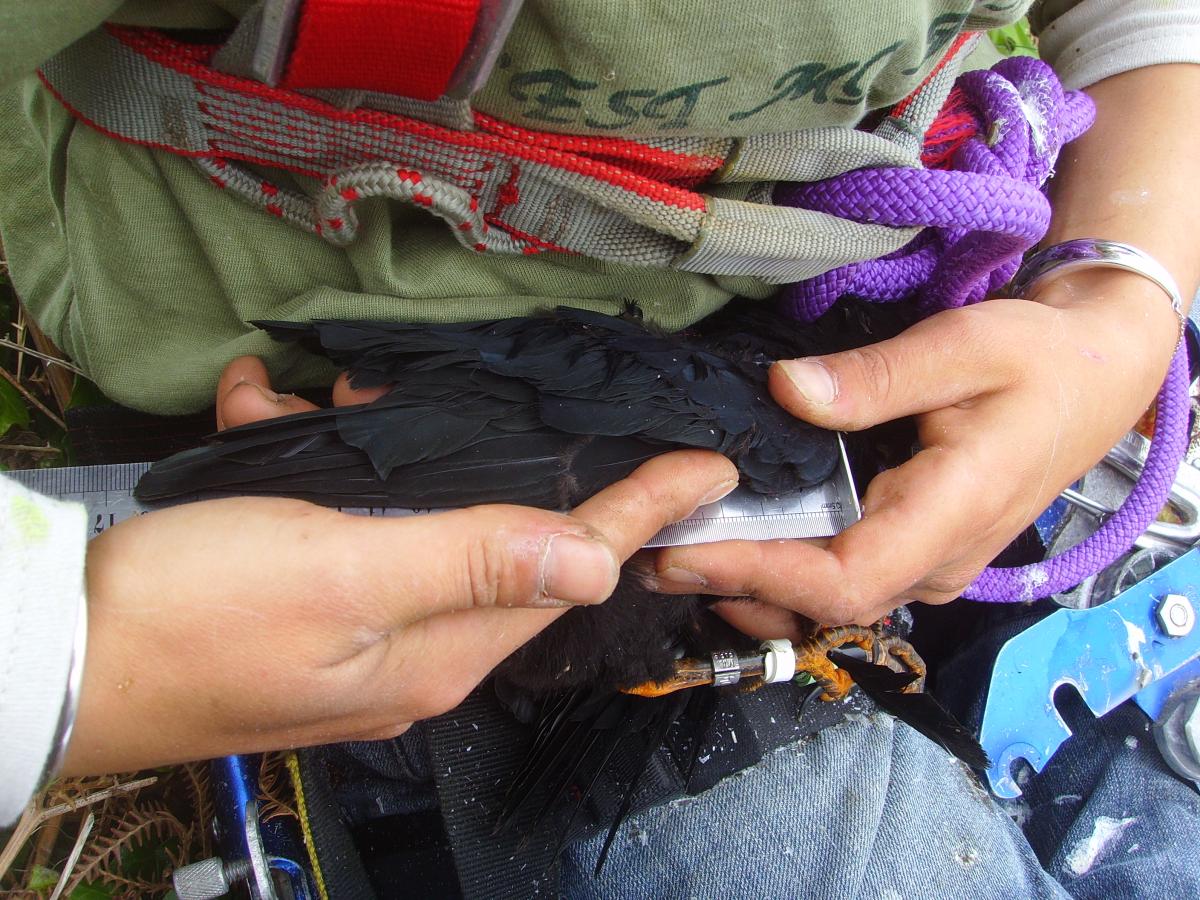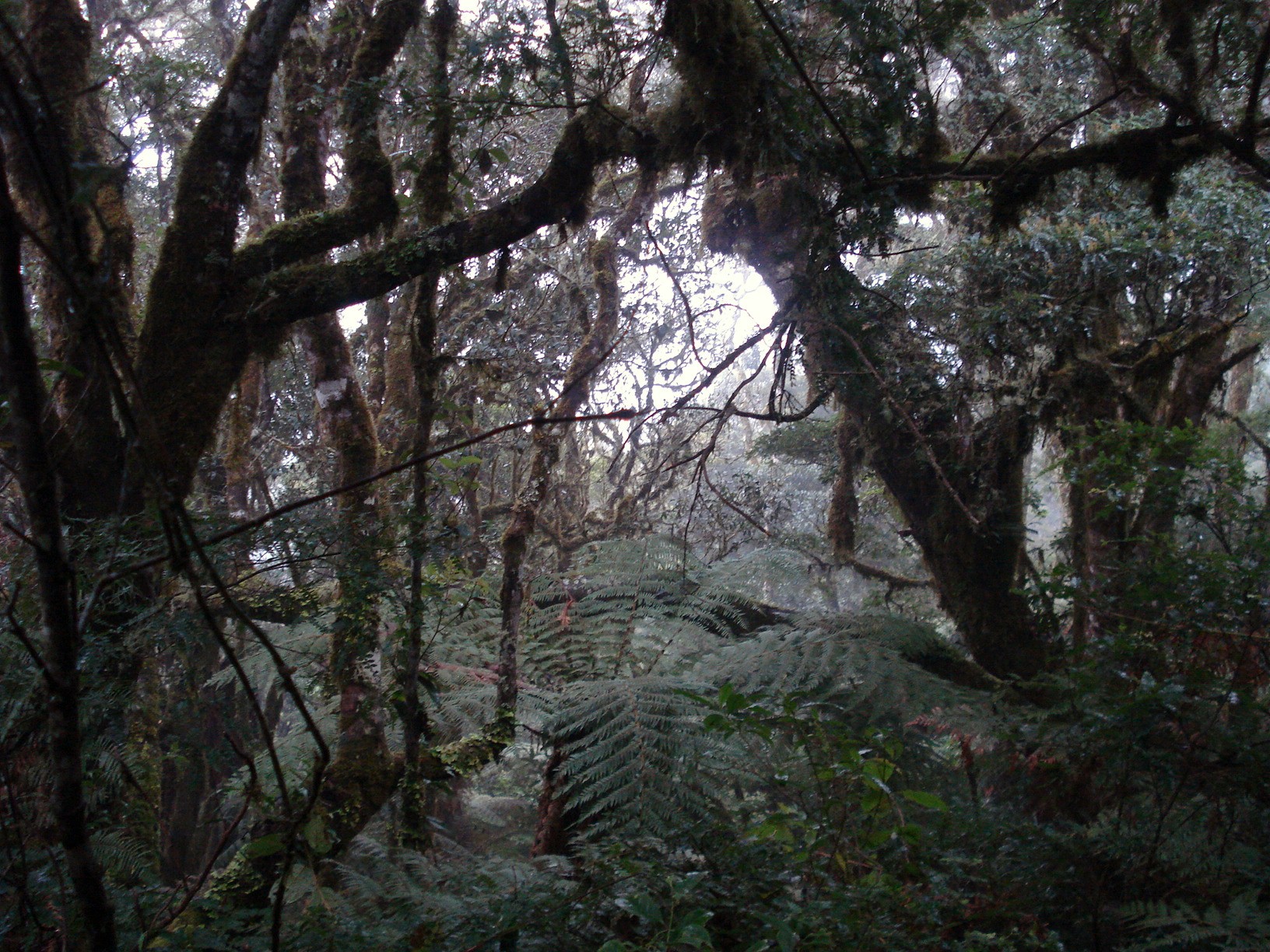|
Southern Helmeted Curassow
The horned curassow (''Pauxi unicornis''), or southern helmeted curassow, is a species of bird in the family Cracidae found in humid tropical and subtropical forests. It was first described by James Bond and Rodolphe Meyer de Schauensee in 1939 from a specimen collected in Bolivia, and further birds that were described from Peru in 1971 were thought to be a new subspecies. However, the taxonomical position (as subspecies or independent species) of the birds found in Peru in 1971 is unclear. The horned curassow as originally described is endemic to Bolivia. It is a large, predominantly black bird with a distinctive casque on its forehead. It is an uncommon bird with a limited range and is suffering from habitat loss, and the International Union for Conservation of Nature has rated its conservation status as being " critically endangered". Taxonomy and systematics In 1937 while in Bolivia Mr M. A. Carriker found two birds, a male and female, which were in the cracid family. The spe ... [...More Info...] [...Related Items...] OR: [Wikipedia] [Google] [Baidu] |
James Bond (ornithologist)
James Bond (January 4, 1900 – February 14, 1989) was an American ornithologist and expert on the birds of the Caribbean, having written the definitive book on the subject: '' Birds of the West Indies'', first published in 1936. He served as a curator of the Academy of Natural Sciences of Philadelphia. His name was appropriated by writer Ian Fleming for his fictional British spy of the same name; the real Bond enjoyed knowing his name was being used this way, and references to him permeate the resulting media franchise. Life and career Bond was born on January 4, 1900, in Philadelphia, Pennsylvania, the son of Margaret Reeves ( Tyson) and Francis Edward Bond. His interest in natural history was spurred by an expedition his father undertook in 1911 to the Orinoco Delta. Bond was educated at the Delancey School followed by St. Paul's School in Concord, New Hampshire, but after the death of his mother he moved with his father to the United Kingdom in 1914. There, he studied at Ha ... [...More Info...] [...Related Items...] OR: [Wikipedia] [Google] [Baidu] |
Wing Chord (biology)
Wing chord is an anatomical measurement of a bird's wing. The measurement is taken with the wing bent at a 90-degree angle, from the most prominent point of the wrist joint to the most prominent point of the longest primary feather. It is often taken as a standard measurement of the proportions of a bird and used to differentiate between species and subspecies. See also * Bird measurement Bird measurement or bird biometrics are approaches to quantify the size of birds in scientific studies. The measurements of the lengths of specific parts and the weights of birds varies between species, populations within species, between the sex ... References {{Bird-stub Bird anatomy ... [...More Info...] [...Related Items...] OR: [Wikipedia] [Google] [Baidu] |
Neotropical Birding
The Neotropical Bird Club (NBC) is a British-based ornithological and birdwatching club established in 1994 for people interested in the birds of the Neotropics, namely South America, Central America from Mexico to Panama, and the islands of the Caribbean. Its aims are to foster interest in Neotropical birds among birdwatchers, support conservation in the region, encourage birdwatchers there to contribute to bird conservation, publish articles and notes about the birds, their identification and conservation, focus on priority species and sites, drawing attention to conservation needs, publicise the activities of local individuals and groups, and improve their liaison and collaboration with other birdwatchers. Publications The NBC publishes the biannual scientific journal, ''Cotinga The cotingas are a large family, Cotingidae, of suboscine passerine birds found in Central America and tropical South America. Cotingas are birds of forests or forest edges, that are primary frugiv ... [...More Info...] [...Related Items...] OR: [Wikipedia] [Google] [Baidu] |
The Auk
''Ornithology'', formerly ''The Auk'' and ''The Auk: Ornithological Advances'', is a peer-reviewed scientific journal and the official publication of the American Ornithological Society (AOS). It was established in 1884 and is published quarterly. The journal covers the anatomy, behavior, and distribution of birds. It was named for the great auk, the symbol of the AOS. In 2018, the American Ornithology Society announced a partnership with Oxford University Press to publish ''The Auk: Ornithological Advances'' and '' The Condor: Ornithological Applications'' ''.'' In January 2021, the journal was renamed ''Ornithology'', with the stated goal of improving descriptiveness, thematic focus, and ease of citation of the journal title. The society's sister publication '' The Condor'' was renamed ''Ornithological Applications'' at the same time. Editors The following have been editors-in-chief of the journal: See also * List of ornithology journals References External links ... [...More Info...] [...Related Items...] OR: [Wikipedia] [Google] [Baidu] |
American Museum Novitates
''American Museum Novitates'' is a peer-reviewed academic journal published by the American Museum of Natural History. It was established in 1921. According to the ''Journal Citation Reports'', the journal has a 2013 impact factor The impact factor (IF) or journal impact factor (JIF) of an academic journal is a scientometric index calculated by Clarivate that reflects the yearly mean number of citations of articles published in the last two years in a given journal, as i ... of 1.636. References External links * Publications established in 1921 Open access journals American Museum of Natural History English-language journals Zoology journals Paleontology journals Geology journals Academic journals published by museums 1921 establishments in the United States {{paleontology-journal-stub ... [...More Info...] [...Related Items...] OR: [Wikipedia] [Google] [Baidu] |
Auk (journal)
''Ornithology'', formerly ''The Auk'' and ''The Auk: Ornithological Advances'', is a peer-reviewed scientific journal and the official publication of the American Ornithological Society (AOS). It was established in 1884 and is published quarterly. The journal covers the anatomy, behavior, and distribution of birds. It was named for the great auk, the symbol of the AOS. In 2018, the American Ornithology Society announced a partnership with Oxford University Press to publish ''The Auk: Ornithological Advances'' and '' The Condor: Ornithological Applications'' ''.'' In January 2021, the journal was renamed ''Ornithology'', with the stated goal of improving descriptiveness, thematic focus, and ease of citation of the journal title. The society's sister publication '' The Condor'' was renamed ''Ornithological Applications'' at the same time. Editors The following have been editors-in-chief of the journal: See also * List of ornithology journals References External links ... [...More Info...] [...Related Items...] OR: [Wikipedia] [Google] [Baidu] |
Cotinga (journal)
''Cotinga'' is a biannual peer-reviewed scientific journal of ornithology published by the Neotropical Bird Club. It was established in 1994 and covers the field of neotropical ornithology and bird conservation in South America, Central America from Mexico to Panama, and the islands of the Caribbean. The focus of the journal is on new distributional and temporal information, including new country records, new biological information, particularly on breeding, and new interpretations on taxonomy, particularly descriptions of new taxa. It publishes articles, short notes, and reviews. Articles are published in English, Spanish, or Portuguese, with an abstract in English, Spanish, Portuguese, or French. The current editor-in-chief is George Wallace. See also * List of ornithology journals The following is a list of journals and magazines relating to birding and ornithology. The continent and country columns give the location where the journal or magazine is published and may not corre ... [...More Info...] [...Related Items...] OR: [Wikipedia] [Google] [Baidu] |
Isiboro Sécure National Park And Indigenous Territory
Isiboro Sécure National Park and Indigenous Territory (''Territorio Indígena y Parque Nacional Isiboro Secure,'' TIPNIS) is a protected area and Native Community Land in Bolivia situated between the north of the Cochabamba Department and the south of the Beni Department ( Chapare, Moxos, and Marbán provinces). It protects part of the Bolivian Yungas ecoregion. The indigenous people living within the park belong to the Tsimané, Yuracaré, and Mojeño-Trinitario peoples. The southern portion of the park has been colonized by agricultural settlers, primarily coca farmers, since the 1970s. The Bolivian government estimates that 10% of the park has been deforested by their presence. Establishment The park was made into a National Park by Supreme Decree 7401 on November 22, 1965 and recognized as an indigenous territory (formally as Native Community Land) through Supreme Decree 22610 on September 24, 1990, following pressure by local native peoples and the March for Territ ... [...More Info...] [...Related Items...] OR: [Wikipedia] [Google] [Baidu] |
Carrasco National Park
Carrasco National Park is a national park in Cochabamba Department, Bolivia. It has a surface area of 6,226 square kilometers. More than 5,000 plant species have been registered in the area, placing the park among Bolivia's most biologically diverse. It is a protected area and people are prohibited from living inside the park. It was created on October 11, 1991. The park is a mountainous landscape of rivers, waterfalls, gentle valleys and deep canyons. It protects part of the Bolivian Yungas ecoregion. There is exuberant vegetation that protects and harbors several animals, plants and trees that are in danger of extinction. The park is located to the east of Cochabamba Department and extends along the provinces of Carrasco, Tiraque Tiraque is a location in the Cochabamba Department, Bolivia, and capital of the Tiraque Province Tiraque is a province in the Cochabamba Department in central Bolivia. Its capital is Tiraque. Subdivision The province is divided into two muni ... ... [...More Info...] [...Related Items...] OR: [Wikipedia] [Google] [Baidu] |
Amboró National Park
Amboró National Park in central Bolivia is a nature reserve with over 912 species of birds, over 177 mammalian species including puma, ocelot, and the rare spectacled bear. Covering an area of 4,425 km² (1,709 sq mi), it is protected from human settlements, hunting, mining and deforestation, though problems with all these still exist within the park. The Carrasco National Park is placed adjacent to Amboró, and together the two form a larger conservation unit. Description and geography Amboró National Park is in the western part of Santa Cruz Department, at the "Elbow of the Andes", where the eastern cordillera bends slightly westward from its northly course. Amboró National Park lies within the Central Andes bioregion and protects parts of several distinct ecoregions: Southwest Amazon moist forests, Dry Chaco, Bolivian montane dry forests, Chiquitano dry forests, and Yungas at higher elevations. The peculiar features of the geography of the Amboró park area determine ... [...More Info...] [...Related Items...] OR: [Wikipedia] [Google] [Baidu] |
Habitat Loss
Habitat destruction (also termed habitat loss and habitat reduction) is the process by which a natural habitat becomes incapable of supporting its native species. The organisms that previously inhabited the site are displaced or dead, thereby reducing biodiversity and species abundance. Habitat destruction is the leading cause of biodiversity loss. Fragmentation and loss of habitat have become one of the most important topics of research in ecology as they are major threats to the survival of endangered species. Activities such as harvesting natural resources, industrial production and urbanization are human contributions to habitat destruction. Pressure from agriculture is the principal human cause. Some others include mining, logging, trawling, and urban sprawl. Habitat destruction is currently considered the primary cause of species extinction worldwide. Environmental factors can contribute to habitat destruction more indirectly. Geological processes, climate change, introdu ... [...More Info...] [...Related Items...] OR: [Wikipedia] [Google] [Baidu] |


